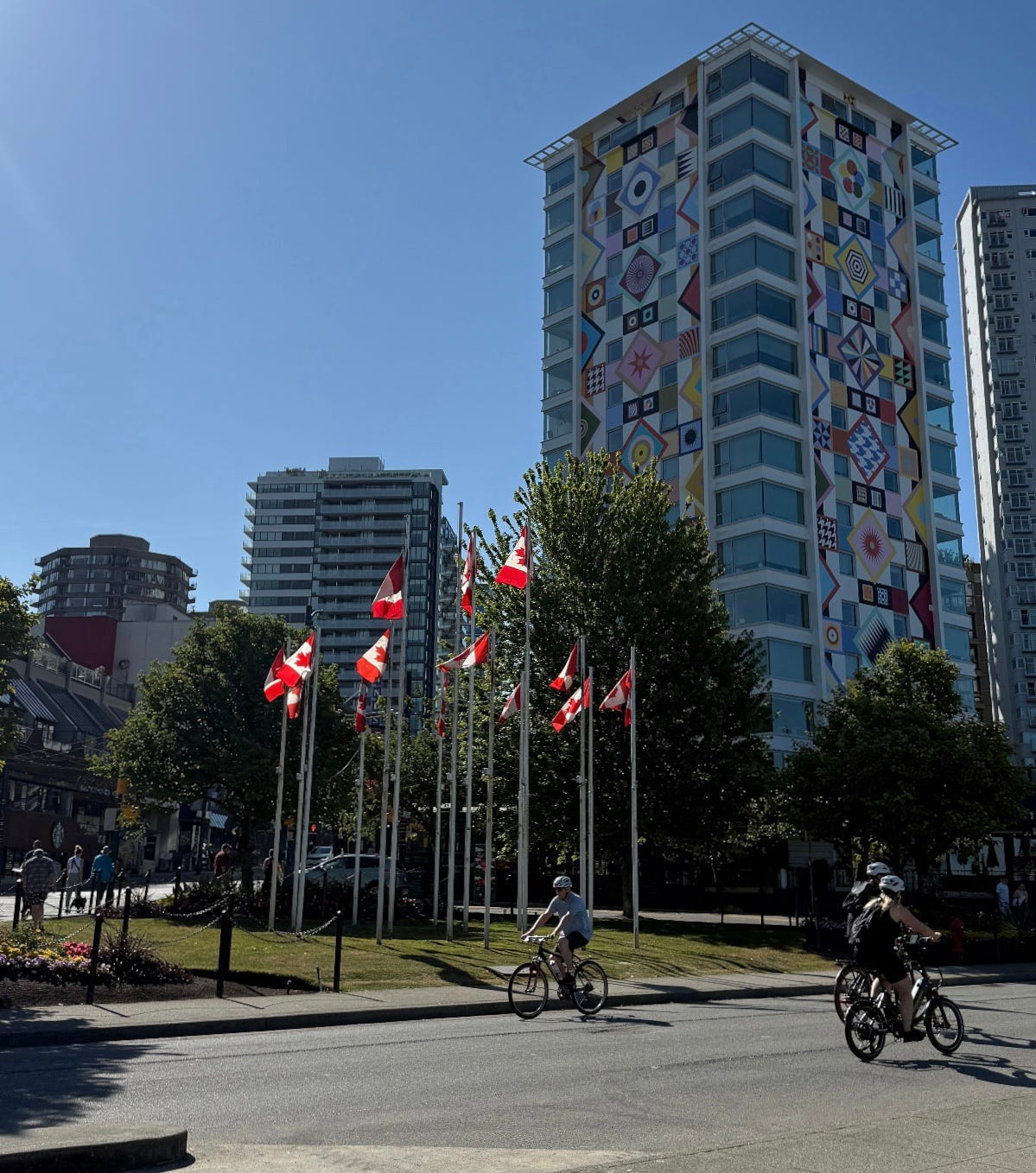TLDR:
Just because a home has been sitting doesn’t mean it’s a red flag. In slower seasons like summer, knowing how to evaluate what’s worth revisiting can lead to smarter (and less competitive) buys.
Checking out real estate in other cities is one of my favorite things to do
I just got back from a trip to Vancouver, and like always, I couldn’t help myself. I spent part of it walking through neighborhoods and checking out local real estate.
You get a feel for how people live, what kinds of homes are valued, how different or not so different the market feels.
One thing that stood out in Vancouver was how little single-family housing there is. Most of what you see are condos, townhomes, and mid- to high-rise buildings. I learned that the city has had a long-standing policy and planning approach that emphasizes density and smart land use. In fact, less than 20 percent of Vancouver’s housing stock is made up of detached single-family homes.
It’s a city that’s leaned into density. You see it not just in the housing, but in how people move—on foot, on bikes, and through compact, connected neighborhoods.
As I walked through different areas, I started noticing how many homes had been on the market a while. They weren’t falling apart. Some were actually really nice. But they’d clearly been overlooked.
In competitive markets like the Bay Area or Vancouver, where good homes often go in two weeks or less, it’s easy to assume that if something’s been sitting, there must be a catch.
It reminded me how often we write off a property just because it’s been sitting. Especially this time of year, when the summer slowdown hits and buyer energy dips.
Not every home that’s lingering is a red flag. Some are just waiting to be seen differently.
Why good homes sometimes sit: 🏡
Overpriced at launch.
A high price early on can cause a home to sit. Once it’s been sitting, people start to assume something must be wrong.
Bad timing.
Listed around a holiday, right after a rate hike, or during a week when everyone was traveling.
Weak marketing.
Dim lighting, poor staging, or bad photos can make a great home feel forgettable online.
Lack of flexibility.
Hard to tour. Hard to reach. A seller who isn’t ready to negotiate.
These aren’t dealbreakers on their own—but they can explain why a good home isn’t getting traction.
How I evaluate a property that’s been sitting: 🔍
When a home has been on the market longer than expected, it’s easy to assume something’s wrong. But often, it just takes a clearer lens. Here's how to evaluate whether it’s worth a closer look:
Look at the price history
Start with the numbers. Was it overpriced at launch? Has the price dropped?
That can signal the seller is more flexible now, not that the home is flawed.
Pull the comps
Check what similar homes nearby have sold for and how fast.
This helps you see whether the home is mispriced or just listed at the wrong time.
Tour it in person
Some homes simply don’t photograph well. Bad lighting, odd angles, or poor staging can make a solid home feel forgettable online.
You won’t know until you’re inside.
Get the backstory
If you’re working with an agent, have them call the listing agent. Was it hard to show? Did the seller resist negotiating earlier?
A quick conversation can reveal a lot.
Distinguish cosmetic vs. core issues
Paint color, carpet, or clutter are easy to fix.
Choppy layout, poor natural light, or a loud location are much harder.
Know what’s worth overlooking and what’s not.
If you're not trying to win a bidding war: 🎯
This is your season.
Summer can feel quiet, but that’s where opportunity often lives. The homes no one’s rushing to see. The ones that slipped through the spring chaos.
Buying in a slower market takes a bit more discernment—but it can lead to a smarter, more grounded purchase. Especially if you’re not just trying to buy fast, but buy well.
Not every hot listing is worth chasing.
And not every home that’s sitting is a red flag.
Sometimes, the best deals are the ones everyone else overlooked.


